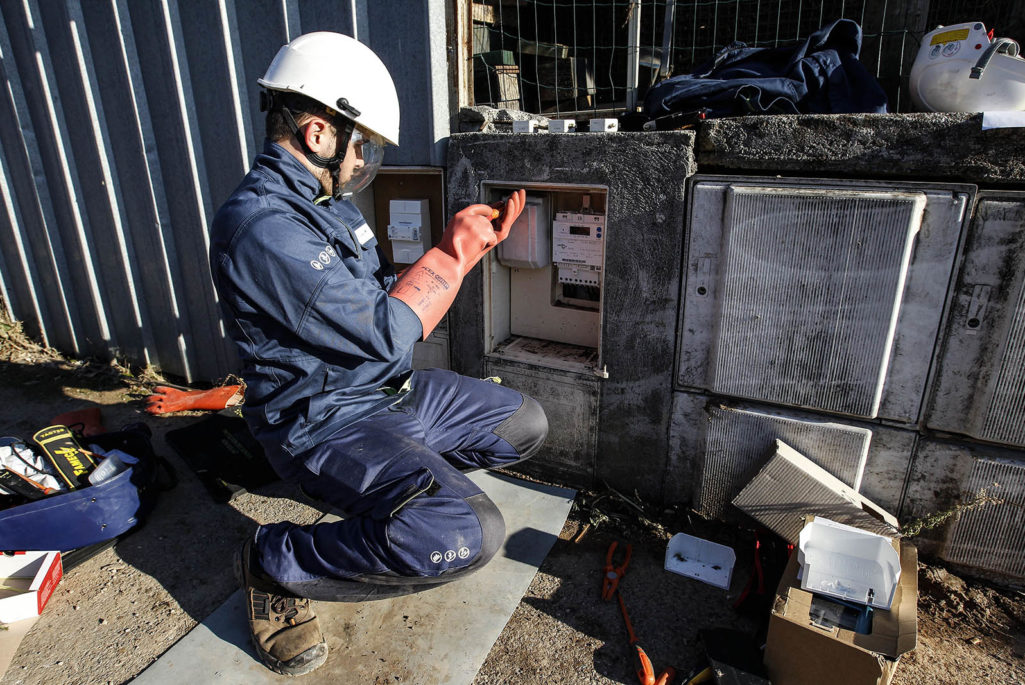The Long but Necessary Road to Energy Resilience

A technician fixes an electrical system in Cannes, southeastern France, on October 7, 2015 following the deadly floods. Mediterranean resort towns such as Cannes, Nice and Antibes were devastated by a torrential weekend downpour.
Photo: Jean-Christophe Magnenet/AFP/Getty Images
As the world meets in Paris for COP 21, the energy sector needs a clear pathway that ends the uncertainty that has cast a shadow over the energy sector for the last decade. Climate change negotiators have an unprecedented opportunity—and also a responsibility—to put us on a sustainable path that will allow the global economy to continue growing while minimising the impact on the environment.
The world risks failing to meet its energy goals and basic goals of economic development if action is not taken now. In its latest publication, The Road to Resilience − Managing Extreme Weather Risks, the World Energy Council points out that the frequency, severity and exposure of energy systems to extreme weather events are increasing and that the world needs to build more resilient energy systems.
The report highlights the pending crisis that the global economy will face if energy systems are not transformed to handle changing climatic conditions.
The occurrence of extreme weather events has quadrupled over the last 40 years, from 38 events in 1980 to 174 events in 2014. Severe storms’ contribution to overall insured losses (last 5 years compared to last 20 years) alone has increased more than 40 percent. Many more events are expected in the future, driven by the increase in global average temperatures.
These climatic conditions are impacting the energy infrastructure and interconnected systems everywhere. As the frequency and severity of extreme weather events increase, the strain on energy supply and demand, production, revenue streams and overall system efficacy is nearing crisis levels. The trends suggest no region is unaffected and no energy system is unthreatened; a global view for energy resiliency is required.
Traditional approaches for energy infrastructure resiliency need to evolve to align with extreme weather tendencies.
The traditional approach for energy infrastructure resiliency needs to evolve to align with the increasingly extreme weather. In the past, the energy sector has relied on “hard resilience”—an approach focused on building “fail-safe” infrastructure systems. Resilience has been viewed as a way to bring single assets back into operation after an event.
“Hard-resilience” measures are no longer sufficient. Rather than preparing energy assets to resume operations after an event, the energy sector needs to be prepared for an event to occur anytime. Adopting a view of “soft-resilience”—one that focuses on preparing for extreme events—is more proactive and enables better planning.
Furthermore, to ensure the reliability of operations, energy systems need to be viewed holistically as opposed to individual assets. This reduces vulnerabilities that may result from unanticipated events in one part of the value chain and also provides opportunities for different sectors to work together to ensure continuity.
Overall, there needs to be a shift from “fail-safe” systems that look at single assets to “safe-fail” systems that take a systemic approach towards the energy value chain and a more strategic approach towards identifying vulnerabilities.
Financial Investments Needed to Bolster Energy Resiliency
There is a significant financial investment required over the next several years to increase the resiliency of energy systems. Current estimates show between $48 trillion and $53 trillion is needed for energy adaptation alone; however this does not include the measures needed to support resilience. Given the magnitude of funding required, the responsibility of resilience is on both the public and private sectors to ensure that costs are managed effectively.
Several challenges currently stand in the way of generating resiliency investment and require the support of various stakeholders to tackle. These include developing goals or metrics to measure adaptation (e.g., sufficient level of resilience) to understand its true costs, and enable governments and companies to track progress; incorporating environmental standards into investment considerations, and designing uniquely tailored financial instruments that create opportunities from extreme weather risk.
Though the road to resilience is long, it is an integral aspect of achieving long-term sustainability. As this report concludes, it calls on various stakeholders to take action and play their part in supporting the future resiliency of energy systems. The report calls on:
- Energy companies and project developers to consider extreme weather in their planning, operations and maintenance, and to implement hard and soft resiliency measures
- Regulators to provide guidance for resilience and market regulations, and to open energy infrastructure to all investors
- The financial services industry to develop models that fully reflect extreme weather risks and include hard and soft resilience measures in their cost benefit analyses
- Insurance companies and banks to create risk transfer options for residual risks
- Long-term and institutional investors to collaborate with other stakeholders to overcome investment barriers
The world is changing. The energy sector is in transition and facing a new world order post-COP, as the global geographic, economic and societal outlook evolves over the next several years, industries and economies need to adapt to survive. There is currently no unaffected region and no economy strong enough to protect its energy assets, nor its citizens; resilience is not an option, it is a must.





